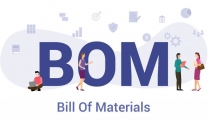What are resources in production?
In manufacturing, a resource refers to any element, material, tool, or asset used in the production process to produce the final result. Resources are essential components that contribute to the overall production process of a product. They can be classified into various types based on their nature and uses. Some common resource types in manufacturing include:
- Raw materials: These are the basic ingredients used to create a finished product. Raw materials can be natural resources such as minerals, metals, wood, or synthetic materials such as plastics and chemicals.
- Labor : The labor force involved in production processes is an important resource. This includes skilled and unskilled workers, operators, technicians, engineers, and others responsible for assembly, machine operation, quality control, and other tasks.
- Equipment and Machinery : Manufacturing often requires specialized machinery and equipment to turn raw materials into finished products. This can include machines such as CNC (Computer Numerical Control) machines, injection molding machines, assembly lines, etc.
- Facilities and Space: The physical space where manufacturing processes take place is also an important resource. This includes factories, warehouses, and other facilities necessary for production.
- Time: Time is an essential resource in production. Effective time management can lead to increased productivity, reduced lead time, and improved overall performance.
- Information and data: In modern manufacturing, data and information are important resources. This includes data related to production schedules, inventory levels, quality control, and other aspects of the manufacturing process.
- Capital and Finance: Sufficient financial resources are needed to invest in equipment, facilities, raw materials and other elements of the production process.
Why is resource planning important in increasing production productivity?
![]()
Comprehensive resource assessment
Conduct a detailed assessment of available resources in the manufacturing process, including manpower expertise, equipment, raw materials, and production time.
Identify key resources that have an important impact on productivity and product quality.
Planning and resource allocation
Make comprehensive plans to allocate and use resources appropriately throughout the production process
Determine time, quantity and how to use resources to ensure effective use and no waste.
Process optimization
Analyze and refine manufacturing processes to eliminate unnecessary steps and optimize resource movement.
Ensure a logical work sequence to prevent wastage of time and resources.
Human resource training and development
Invest in training and development programs to enhance the skills and capabilities of the workforce.
Ensure employees possess the necessary knowledge and techniques to perform their jobs effectively and conserve resources.
Equipment maintenance
Perform routine maintenance and maintain production equipment to ensure continuous and uninterrupted operations.
Apply data-driven maintenance methods to predict maintenance needs, minimizing downtime.
Use raw materials effectively
Identify effective methods of using raw materials to reduce waste and production costs .
Monitor and track material consumption to ensure efficient and minimized use. consumption of raw materials .

Track and measure
Use monitoring and measurement of resource usage to identify weaknesses and opportunities for improvement.
Establish resource performance metrics to ensure optimal utilization and goal achievement.
Continuous improvement and innovation
Encourage innovation and creativity in using resources to find ways to improve processes.
Create an environment that encourages employees to contribute new ideas to use resources more effectively.
Build a resource management framework
Develop a structured resource management framework to ensure planned and efficient use of resources
Clearly define responsibilities and assign authority to effectively manage resources.
Decisions based on data
Use data and analytics to make smart decisions about allocating and using business resources.
Leverage information to adjust strategies and improve resource efficiency.
Effective resource management is the effective alignment and coordination of processes, technology and human commitment, all working in harmony to ensure optimal resource use and continuous improvement in performance. productivity in production.












Replies to This Discussion